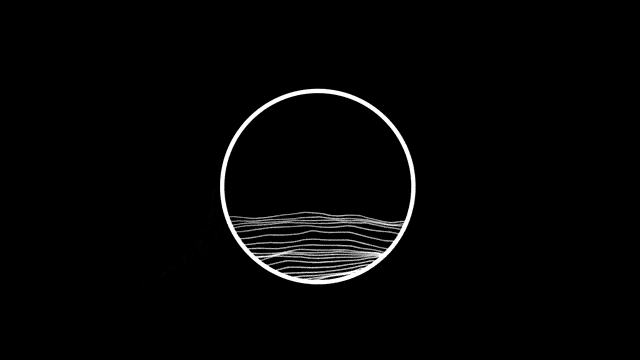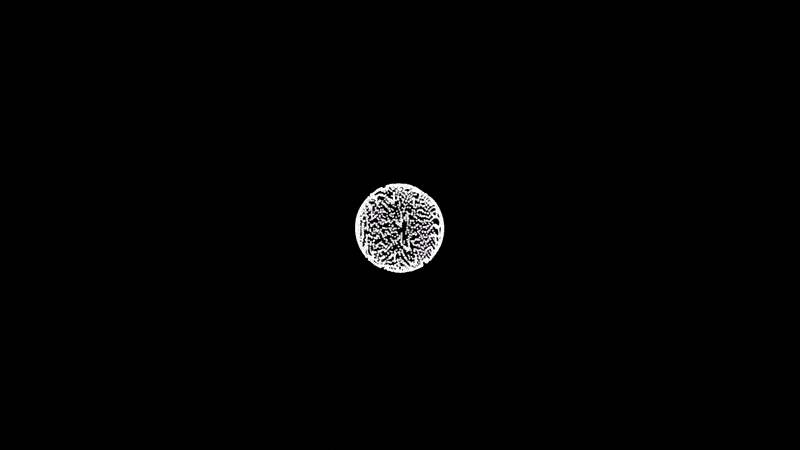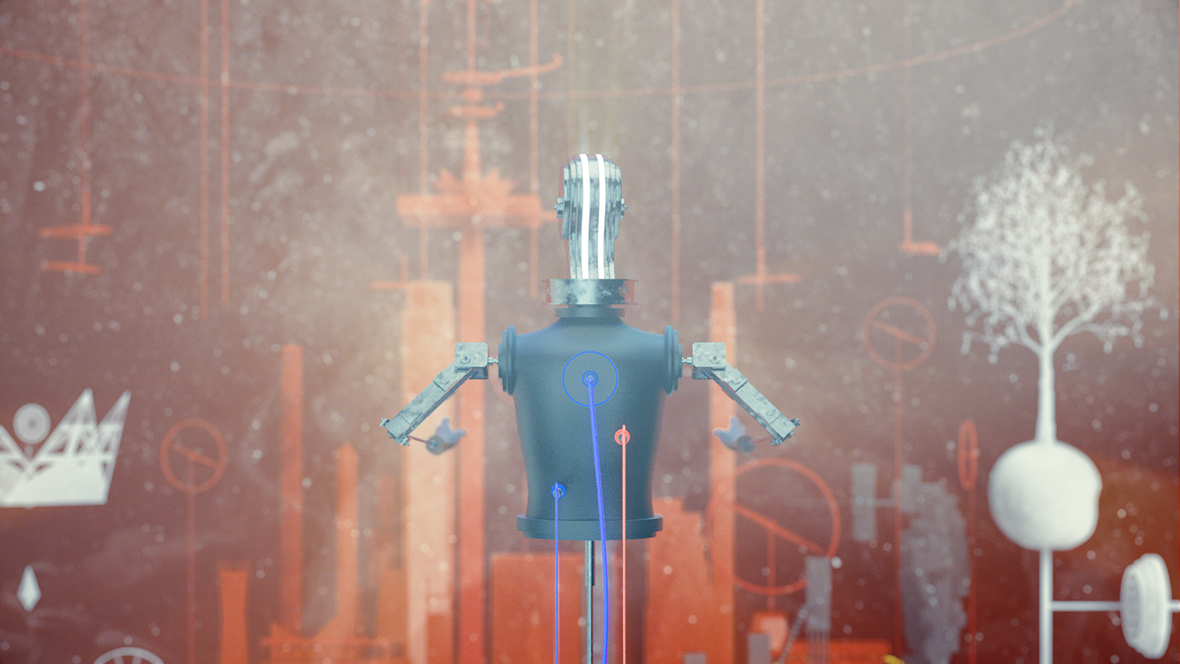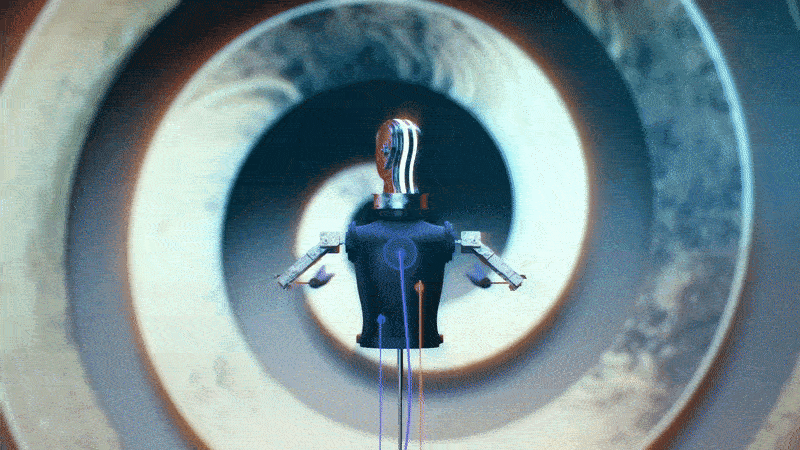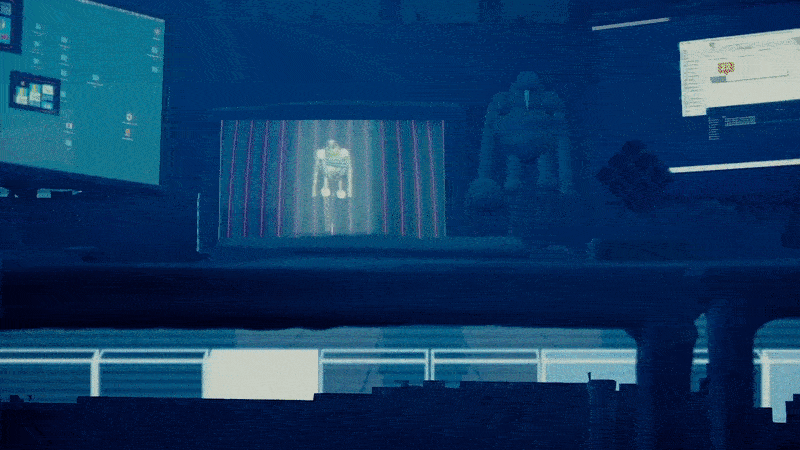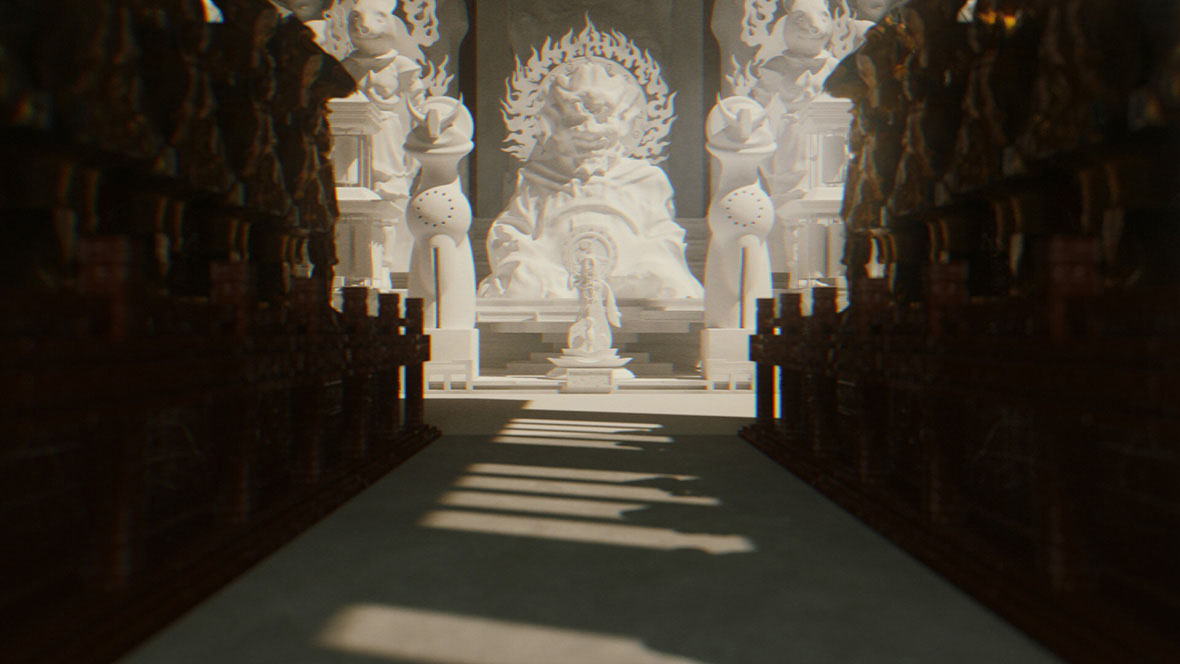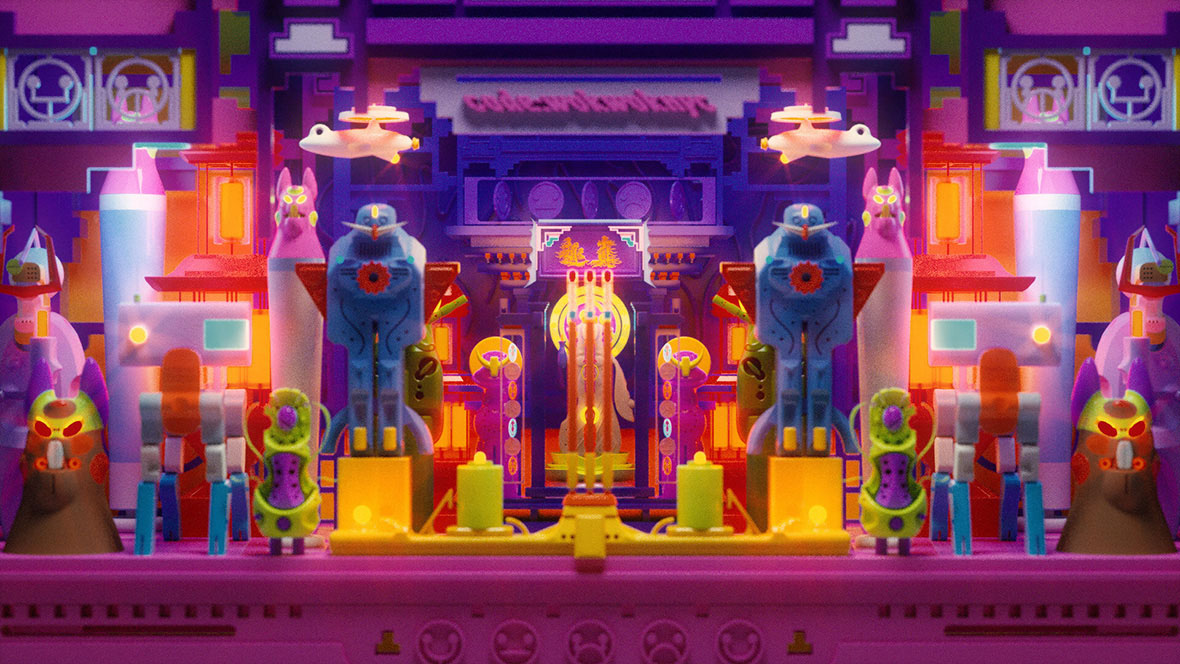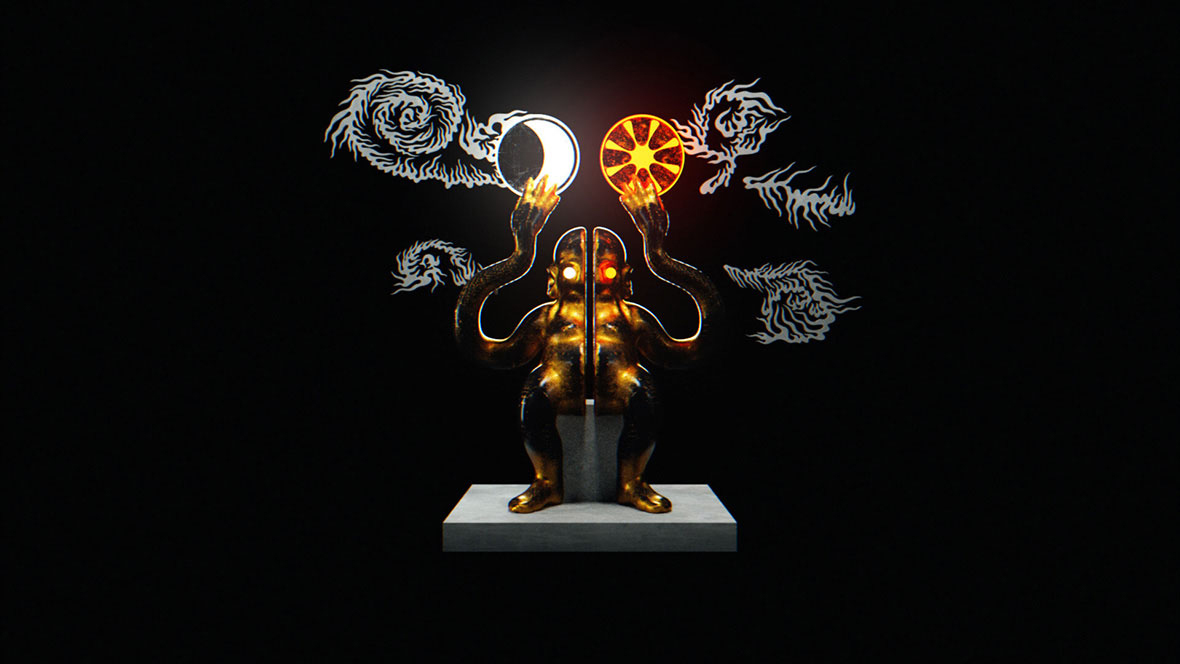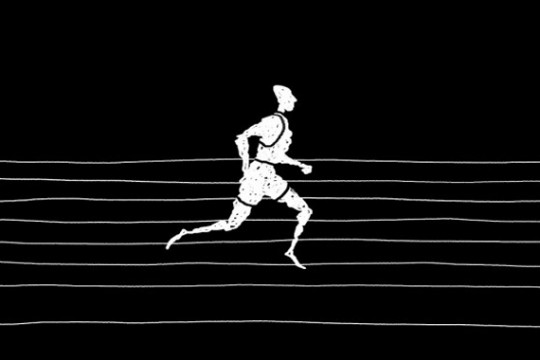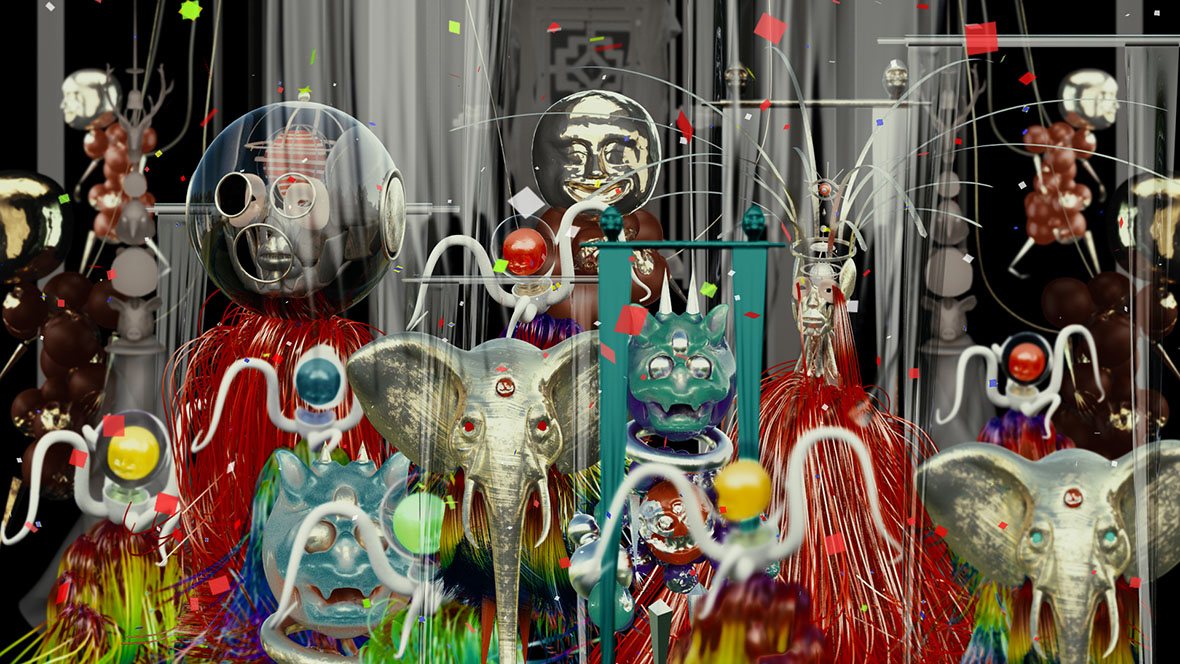
In 2005, at a live set by American DJ D:fuse in Chongqing, Miao Jing—then a young animator with a degree in oil painting—experienced the visual impact of VJing for the first time. The real-time manipulation of visuals in sync with music captivated her, inspiring her to begin a VJ career of her own in Chengdu.
Meanwhile, in New York City, a college student by the name of Liu Chang just started getting into video production. His studies led him into the world of video art, and eventually into VJing.
When the two met in 2008, something clicked. Their mutual interest in VJing led to the launch Hibanana Studio, a new media art atelier where their shared love of moving images could be fully realized.
Marking the launch of Hibanana Studio in 2011, the duo debuted an audiovisual installation titled Manufactured Landscape – Dreamland for a gallery in Shenzhen. They took over the entire space, transforming the entire venue into an immersive experience where viewers could walk amongst spheres of moving light and undulating shadows. This was the first time they saw people interact with their art in person, and it left a lasting impression. The experience convinced them to explore the potential of digital art.
差不多在 2005 年的时候,苗晶接触到了美国的 DJ D-fuse 在重庆的表演,学油画出身的他感受到音画视觉上的同步带来的强烈冲击,最终从架上绘画转向了 VJ 实践。与此同时,正在纽约读书的刘唱因为专业课题接触到了影像装置,也渐渐对 VJ 这种创作方式产生了浓厚兴趣。
2008 年,两人相识,一拍即合。一个新媒体艺术工作室即将萌芽,这将融合他们俩对动态影像的热爱于一体。
2011 年,Hibanana Studio 成立。同年,二人合作的第一部声音影像空间装置作品《人造风景–境》在深圳展出,画廊空间被作品改造成一个“沉浸式的盒子”,观者可以步入光影装置中与其互动。这让他们也对交互式和可参与的数字艺术也越来越感兴趣,并最终深入创作出众多令人惊艳的数字作品。
Nowadays, Hibanana Studio remains focused on new media art. Though much of their work is now done on a more scaled-down capacity, there is no compromise on their level of production. Each project requires a staggering amount of time and research before anything can begin, but considering how long the duo has worked together, the collaborative process is without many hiccups. The two artists, coming from different creative backgrounds, often have their own takes on the meaning of a project and how it may take shape. But this creative friction has ultimately furthered the boundaries of their imagination. “Liu Chang is more philosophical, and is much more sensual,” Miao laughs. “Under her touch, a certain gentleness is added to the work. Me, on the other hand, I’m more focused on aesthetic impact and technical execution.”
其实现在 Hibanana Studio 专注小而精的创作项目,这需要用大量的时间和研究来打磨项目。刘唱与苗晶分别来自不同的教育背景,对作品理解的方式也有差异,多年合伙下来,却为作品带来了更丰富的东西。“刘唱是喜欢文学且感性的那种人,每次合作的艺术项目在她的提炼下都会变得柔软,我相对比较注重造型的精美与技术的结合。”苗晶如是说。
无法播放?前往腾讯视频
One of the most essential ingredients in a Hibanana Studio project is the music. Liu has a rather different take on what music is though—he sees music as nothing more than audio waveforms. “Everything has a sound of its own, and the thought of that alone is enough to captivate the imagination and spawn an array of abstract or literal visuals,” he says. “I believe every note, melody, and sound can be associated with a character, material, light, or even be more nuanced.”
作为 Hibanana Studio 作品中一种不可或缺的元素,音乐,苗晶的观点显得很超脱。他认为音乐就是声音。“万物都是有她自己的声音的,这点已经给你带来非常多的视觉想象,不管是抽象还是写实。我认为每个音符、旋律、音效,都可以链接到一个角色、材质、灯光,还可以分得更加细致。”
无法观看?前往腾讯视频
For Hibanana Studio, every project is a chance to exercise new creative muscles. Despite the nature of their work, with visuals only appearing for a few fleeting seconds or milliseconds, each frame is given a painstaking amount of attention. The duo also almost never strays far thematics based on distant cultures and olden traditions, which they’ve long considered as a font of inspiration. Take, for example, ZPTPJ, an audiovisual project that revolved around Zep Tepi, an Egyptian creation myth about the origin of the universe. “We never want to appropriate culture, but we are interested in tapping into its essence,” Liu says. “We’re keen on reorganizing and reimagining it, through a process akin to a sculptor reshaping a stone block into something brand new. That’s our favorite part of the creative process.”
Hibanana Studio 的每个项目都会经历种种不同的淬炼,那些哪怕仅有几秒钟的图象也都是“有原始美学出处的”,大多来自不同文明的古代美学经典。比如《ZPTPJ.初》,这个曾在上海保利时光里展出的巨幅新媒体作品,就用到了象征宇宙鸿蒙、开天辟地之时的图景,也运用了远古部落的奇异符号,以传达古埃及神话中“Zep Tepi”(初始之时)年代的图景。“我们不希望直接挪用,而是提取精华概念,重组、再造,这个过程特别像工匠在造像,这是我们喜欢的过程。”
The ability to embrace different perspectives is crucial in producing a fleshed-out piece of work, and this is also an area Hibanana Studio shines. Aside from Liu and Miao, the studio collaborates with a wide variety of artists across a slew of creative fields, whether it be designers, musicians, or engineers. Input from these different disciplines injects life into an idea, and Liu believes that working in this manner will result in works that have more longevity than a one-off video or installation piece. A willingness to work with unfamiliar creative disciplines and new technology also means their idea evolve and transform into something that’s completely different from its original form.
难能可贵的是,一件成熟的作品必然需要不同的维度和角度,Hibanana Studio 的每件作品几乎都有不少艺术家协作参与。他们会根据项目的属性邀请不同的艺术家、设计师、音乐人、工程师等不同角色参与项目的合作,作品就会在各个层面都汲取到养分,从而达到饱满的生命状态。刘唱觉得,这样出来的一部作品不单单是一部短片或一个装置,更像是一个可以不断延伸的系列和组合,在每一次有新的观点出来都能以新元素的方式融入进作品,甚至每次新技术的更新迭代都可以成为作品的新版块或者新版本。
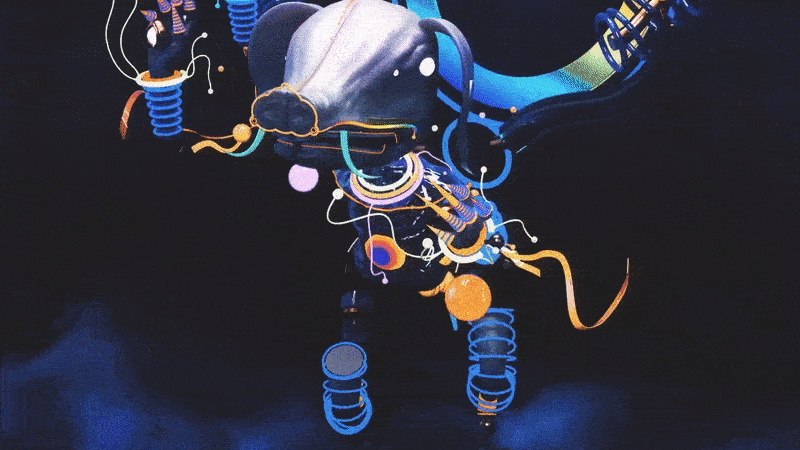
This connection between sound and matter, between the tangible and the conceptual, may seem to lend the duo’s art a certain spiritual slant. Though Liu and Miao aren’t particularly religious, they admit that they’ve long been riveted by the philosophy and aesthetics of different religions. In fact, in their latest project, a passage from the Diamond Sutra, which proposes that all appearances should be seen as illusions, served as the key inspiration.
“‘Form is idea and idea is form’ is something we keep in mind when we create,” Miao says. “First, we try to get a good understanding of the concept, and then we ask more questions. This is how we work. Visuals are nothing if it doesn’t touch the heart, but there’s a lot of involved in the processing of sensory information—whether it be a person’s sense or the actual nerves and neurons between the eyes and the brain. Time and an effort to meditate on the concept are also crucial. In this age of restlessness, being an attentive viewer isn’t easy.”
音乐与万物之间的整合化一、意象与思想的交融输出,让 Hibanana Studio 的作品颇具一些宗教意味。但二人都没有某个具体单一的宗教信仰,吸引他们的,更多是宗教和玄学中的美学和哲理。“凡所有相,皆是虚妄”,是新作中绕不过去的关键句,却也可以看作是 Hibanana Studio 创作的主旨之一。
“‘形式即观念,观念即形式’也是我们创作中会思考的东西。先去感受它,然后再问问题,这才算完成了一个作品走到心里的过程,从眼到心,需要很多感知的触角和神经,也需要凝视的时间和思考的沉淀。”苗晶说道,毕竟,“这在当下这样一个浮躁社会,做一个认真的观众都很难了。”
无法播放?前往腾讯视频
In July 2019, Miao released So Fun Garden, a project broken up into different segments. “It’s an amusement park of sorts,” she says. “The different areas are based on the different mediums and involved artists.” This ambitious animation enlists the help of Seattle-based artist and designer Yi Chengtao, New York-based artist W.Y. Huang and designer Li Siman, LA-based new media artists Yan Jing and Chen Mengyu, and Chengdu-based screenprinting studio Happy Town. The result is an animation that takes viewers into two virtual temples overloaded with absurdities and veiled metaphors. The first is a traditional Chinese garden, filled with figurines and statues of unrecognizable deities, all of which are steeped in an impenetrable mystique. The latter temple feels more like a pachinko machine, colorful and playful, representing the excessive consumerism that’s become baseline for modern society. So Fun Garden is simply the opening chapter of the ongoing project, which looks to cast a critical gaze on the deluge of information today. Within these digital riptides, how do we find safe harbor? How do we differentiate truth from falsehood?
去年 7 月,苗晶发起了一个企划项目《真趣园》,企划分几个版块,“可以理解为一个园区地图的概念,不同的版块对应不同的媒介分类,同时邀请对应的合作者”。这次 Hibanana Studio 就邀请了在西雅图工作的艺术家兼设计师易承桃,纽约音乐人W.Y.Huang 与交互设计师李思曼,洛杉矶新媒体组合严菁和陈梦豫,以及成都丝网工作室解忧堂 Happy Town 合作,共同创作了这般荒诞幻境又充满隐喻的虚拟庙宇——一座是中式园林,图腾散落、玄机万处;另一座则如自动贩卖机,折射着消费主义盛行的当下风气。虽然后续创作还在进行中,但《真趣园》作为企划项目的开篇之作,它已然试图去诘问在这个流媒体信息爆炸的眼下,人们怎样寻找“真实”和“有趣”呢?曾经有过的妙义丛生的哲思,与现如今唾手可得的消费品,究竟孰真孰假、孰是孰非?

“The new media art we work with are all departures from our original areas of study, and it in itself is an intersection of art and technology, a new lexicon that draws from the best of both worlds,” Liu says. “The term ‘new’ in new media isn’t relative to time. Rather, the ‘new’ is about continuity. There’s a halo-shaped curve, and every generation leaves their mark on this curve, but that mark eventually fades, swallowed by time.” Like a Möbius strip, the ongoing evolution of new media art is part of what impels Hibanana Studio to innovate, ever so eager to leave a mark that they can call their own.
“我们从事的‘新’媒体创作的本质就是跨学科的,自然也跨越艺术与科技,并从着两个领域中获取新兴语言。”刘唱说道,“‘新’媒体的这个‘新’不是时间上的前后新旧,而是一种相对的持续性。每一次新的迭代都在它的光环曲线上起复前行,又很快似乎消逝在时间轴上。”这个犹如莫比乌斯环一样的轮回迭代,恰恰赋予了 Hibanana Studio 最为重要的生命驱动力,好让它们在新媒体作品层出不穷的大环境下,葆以一种独特的风格。
Like our stories? Follow us on Facebook and Instagram.
Website: hibanana.work
Vimeo: ~/hibanana
Instagram: @hibanana_studio
Contributor: Chen Yuan

